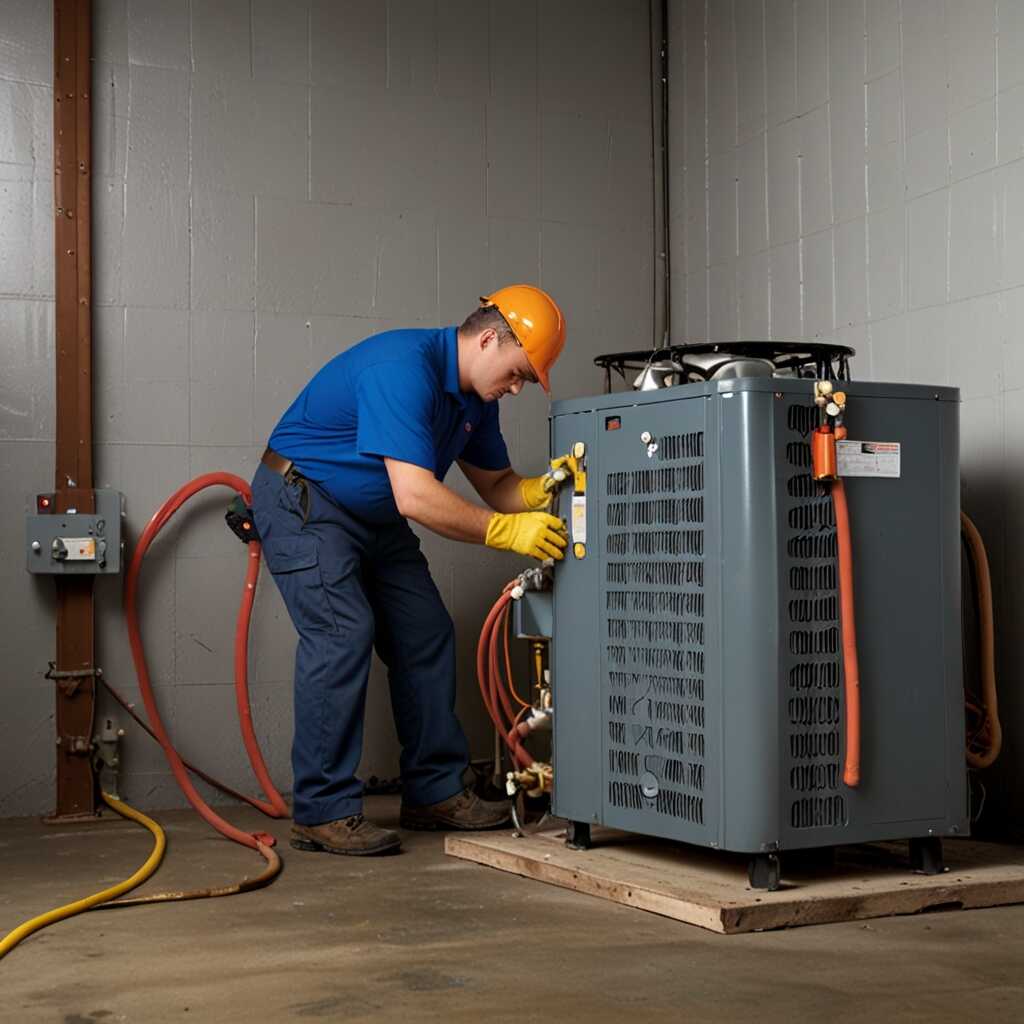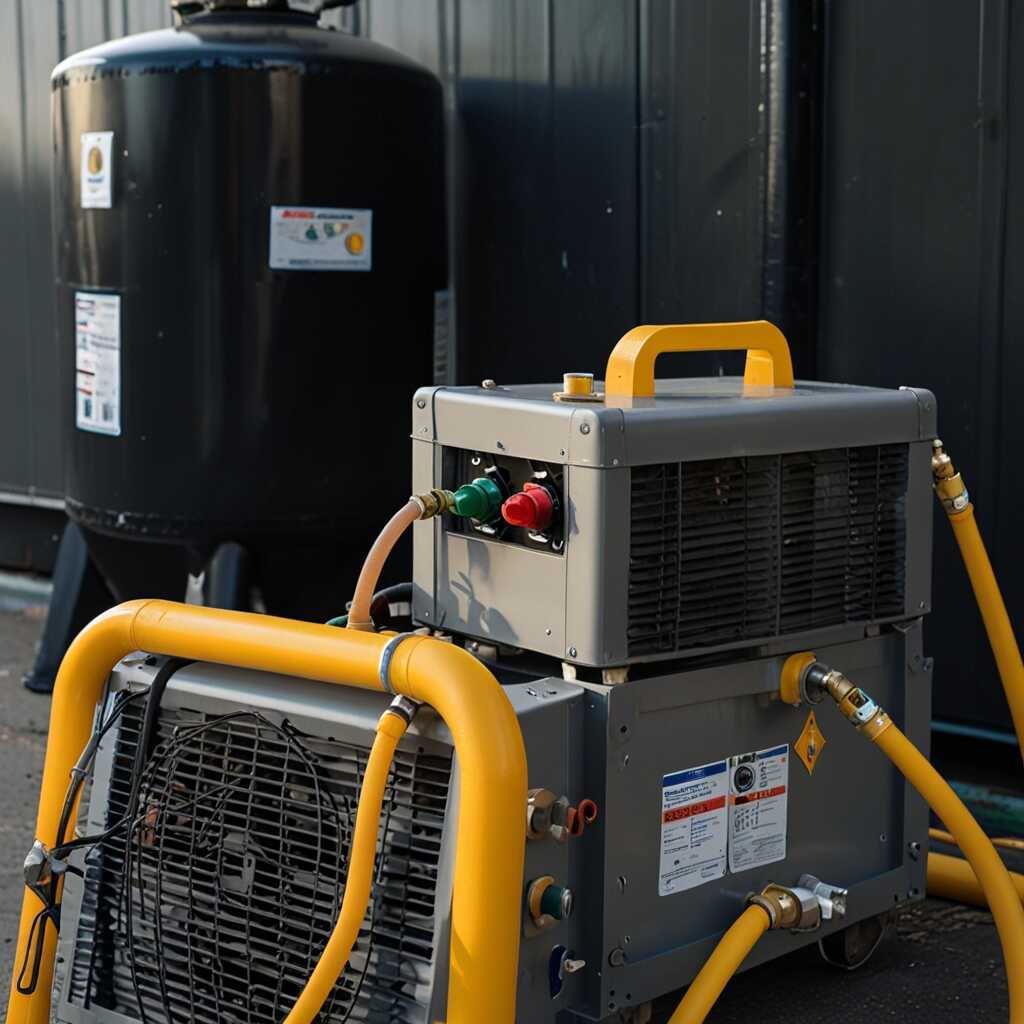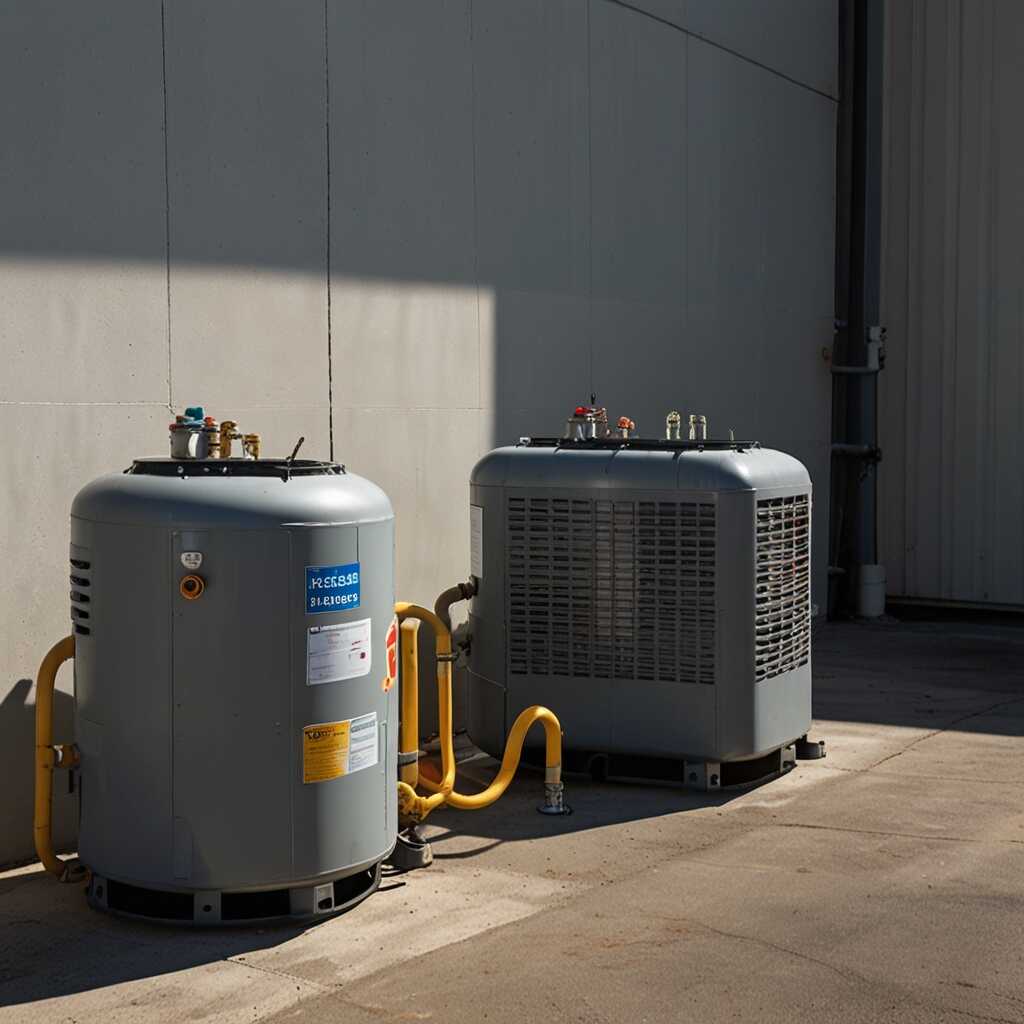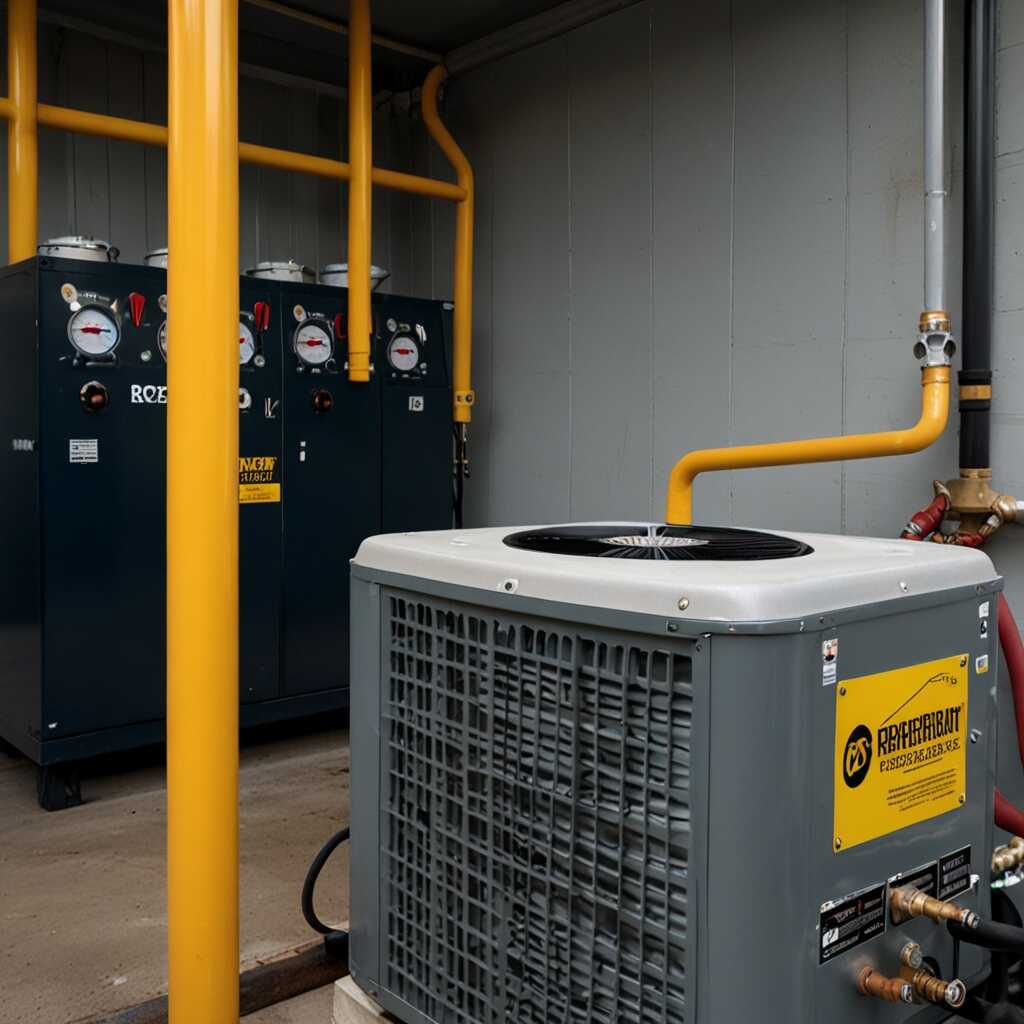Choosing the right size refrigerant recovery cylinder is crucial for safety and efficiency in HVAC operations. The appropriate cylinder size ensures effective refrigerant recovery while minimizing safety risks during the process. At Refrigerant Recovery Pro, we provide expert guidance to help HVAC technicians select the optimal cylinder size based on their specific needs. This article will explore key factors and recommendations to enhance your refrigerant recovery practices.
Significance of Selecting the Appropriate Cylinder Size in Refrigerant Recovery
Selecting the right refrigerant recovery cylinder size is crucial for ensuring safety and enhancing efficiency. A proper size minimizes risks during refrigerant recovery operations. Using a cylinder that is either too small or too large can lead to inefficient recovery rates and potential safety hazards. The proper cylinder size ensures that technicians can handle the maximum volume of refrigerant without risk of overfilling. It also enhances operational effectiveness by reducing recovery time and limiting the need for frequent transfers. Optimal cylinder sizes allow for easier and more reliable transportation of refrigerant, which is especially important in compliance with environmental regulations.
Understanding Cylinder Size Specifications
Understanding cylinder size specifications is vital for HVAC professionals. Most refrigerant recovery cylinders come in standard sizes of 30 lbs, 50 lbs, and 100 lbs. Choosing the correct size depends on the refrigerant type, the job scale, and regulatory requirements. A 30 lbs cylinder is ideal for smaller jobs, while a 100 lbs cylinder provides the capacity necessary for larger projects. Ensuring the right volume enables efficient evacuations and reduces the risk of contamination. Proper cylinder size reduces wait times for disposal and helps maintain the quality of recovered refrigerants, ensuring compliance with the Environmental Protection Agency (EPA) standards.
Essential Safety Protocols for Handling Refrigerant Recovery Cylinders
Key safety protocols for handling refrigerant recovery cylinders include always wearing personal protective equipment (PPE), regularly inspecting cylinders for damage, and ensuring proper ventilation during recovery operations. When using refrigerant types such as R-410A or R-22, technicians must follow specific guidelines to mitigate risks associated with each substance. The maximum legal capacity for a standard refrigerant recovery cylinder is typically 30 pounds, but this can vary based on local regulations.
Specific Safety Gear and Equipment for Technicians
Using specific safety gear is essential for technicians handling refrigerant recovery cylinders. Personal protective equipment (PPE) should include goggles, gloves, and coats designed to protect against chemical exposure. A properly inflated pressure relief valve must be attached to the cylinder to prevent dangerous ruptures. This equipment enhances safety during refrigerant transfer and ensures compliance with industry regulations. Always ensure that the recovery recovery cylinder is placed in an upright position and stored in a cool, ventilated area. Proper equipment handling not only helps protect the technician but also prevents environmental hazards.

Overview of Types of Refrigerant Recovery Cylinders
Refrigerant recovery cylinders come in several types, including disposable, refillable, and multi-valve cylinders. Disposable cylinders are lightweight and designed for one-time use, making them easy to handle and transport. Refillable cylinders are durable and can handle multiple refrigerant doses, ensuring efficiency for HVAC technicians. Multi-valve cylinders allow secure storage of different refrigerants, enhancing safety and reliability. Each type of cylinder has unique advantages designed for specific operational requirements, ensuring that HVAC professionals can choose what best suits their needs.
Choosing the Right Cylinder Based on Refrigerant Capacity
When selecting a refrigerant recovery cylinder, it’s essential to consider the refrigerant capacity. Most HVAC operations benefit from cylinders with a capacity ranging from 30 to 50 pounds. These sizes are large enough to handle standard refrigerant quantities without frequent changes, enhancing operational efficiency. The larger cylinders can store a substantial volume of refrigerant, minimizing downtime during recovery. Additionally, the quality and durability of the cylinder materials play a critical role in ensuring safety and performance. Refrigerant Recovery Pro provides informed recommendations based on years of industry experience, helping technicians select the cylinder that best meets their needs.
Key Numerical Metrics for Choosing the Right Container
- Standard recovery cylinders hold between 30 to 50 pounds of refrigerant.
- Maximum pressure ratings typically reach up to 400 psi.
- Common sizes include 30, 50, and 60-pound cylinders.
- Filtration typically improves recovery efficiency by up to 20%.
- Industry standards recommend a minimum 80% fill while recovering refrigerants.
- Cylinders usually weigh around 40 to 80 pounds when empty or filled.
- Johns-Manville recommends regular inspections every 12 months.

Assessing Your Capacity Needs for Efficient Recovery Operations
To determine the right size for a refrigerant recovery cylinder, evaluate your specific operations. Consider the refrigerant types you typically work with and the volume you expect to recover. Efficiency and safety are paramount, so consult expert reviews and technical data to select a durable cylinder that can handle your demands. The cylinder should be designed to enhance recovery speed while ensuring compliance with industry standards.
Factors Influencing Cylinder Selection for Refrigerant Recovery
When selecting a cylinder for refrigerant recovery, consider the refrigerant type, volume, and recovery speed. The refrigerant type affects cylinder material and pressure ratings. Ensure the cylinder has the capacity to handle the volume of refrigerant you typically recover, as some systems require cylinders with greater maximum refrigerant capacity. Additionally, a quicker recovery speed improves efficiency and safety. It is essential to review manufacturer specifications and consult with experts at Refrigerant Recovery Pro for optimal results.

Routine Maintenance Strategies for Enhancing Cylinder Longevity
Routine maintenance practices can significantly enhance the lifespan and performance of refrigerant recovery cylinders. Regular inspections are essential to identify any signs of wear, damage, or corrosion. Implementing proper inspection techniques helps refrigerant recovery professionals ensure that all components function correctly. Performance testing methods like pressure checks and leak tests are also crucial in gauging the reliability of recovery cylinders. These practices provide valuable data that aids in maintaining efficiency. Experts recommend conducting maintenance checks on refrigerant recovery cylinders at least every six months. This helps identify issues early and reduces potential risks.
Detailed Inspection Techniques for Reliable Performance
Thorough inspection techniques are vital for the reliable performance of refrigerant recovery cylinders. Technicians should examine valve seals, threads, and fittings for wear or damage. Regularly testing the cylinder’s pressure capacity ensures that it can handle the refrigerant load effectively. Additionally, reviewing the cylinder for any dents or structural defects is essential. Maintaining a clean exterior prevents impurities from entering the cylinder. This sets a solid foundation for safety and efficiency during refrigerant recovery operations. Keeping detailed records of all inspections enhances accountability and provides a clear history for future maintenance decisions.
Advantages of Using an Appropriately Sized Cylinder
- Enhances safety by minimizing overpressure risks during operations.
- Improves recovery efficiency through tailored cylinder sizes to job needs.
- Facilitates compliance with EPA refrigerant regulations.
- Reduces time spent on recovery due to optimal capacity.
- Increases durability and longevity of the cylinder when sized properly.
- Offers flexibility for different refrigerants and job types.
- Encourages best practices among HVAC technicians in the field.

Navigating Regulatory Compliance for Refrigerant Recovery Cylinder Use
Understanding regulatory compliance for refrigerant recovery cylinders is essential for HVAC professionals. Key requirements include adherence to standards set by the EPA, ensuring recovery cylinders meet safety specifications, and maintaining proper labeling. HVAC technicians must understand the necessary compliance factors to avoid legal issues while working with refrigerants. Organizations such as the EPA, ASHRAE, and local regulations influence compliance standards significantly. The maximum refrigerant capacity a recovery cylinder should safely handle typically ranges from 30 to 50 pounds, depending on the cylinder’s design.
Important Regulatory Organizations and Their Roles
Multiple regulatory bodies affect refrigerant recovery practices. The EPA oversees refrigerant management, establishing rules that HVAC professionals must follow. ASHRAE provides guidance on safe refrigerant handling and recovery cylinder specifications. Local and state regulations may also enforce stricter compliance standards. By understanding these organizations’ roles, HVAC technicians can ensure adherence to best practices while using recovery cylinders. Proactively researching regulatory updates through sources such as Refrigerant Recovery Pro helps improve compliance and operational efficiency.
Guidelines for Safely Transporting Refrigerant Recovery Cylinders
Safely transporting refrigerant recovery cylinders requires adherence to specific guidelines. First, ensure the cylinder is upright and secured with straps to prevent movement. Use proper handling techniques to avoid dropping the cylinder. Inspect the cylinder for any leaks or damages before transport. Always use a cart or dolly designed for cylinder transportation to enhance safety. Wear appropriate personal protective equipment (PPE) during loading and unloading. Different refrigerant types can have varying implications, so be aware of these when loading. Following these refrigerant recovery procedures can improve safety and efficiency during transport.
Understanding Transportation Regulations for Refrigerant Cylinders
Understanding transportation regulations is crucial for HVAC professionals. Regulatory bodies set guidelines regarding the maximum weight limit for transporting refrigerant recovery cylinders. Typically, the weight limit is around 50 to 75 pounds, depending on the type and size of the cylinder. Compliance with these limits ensures safe handling and reduces the risk of accidents. Transporting cylinders exceeding this weight without proper equipment may lead to injuries or hazardous incidents. Always check local regulations and ensure that you have the proper permits if necessary. Familiarity with these safety transport guidelines enhances operational reliability and compliance.
Popular Brands and Their Suitability for HVAC Needs
- Fieldpiece offers robust cylinders that withstand high pressures effectively.
- Robinair features lightweight options that are still durable.
- Yellow Jacket provides large capacity cylinders ideal for extensive jobs.
- Appion products excel in portability, ideal for mobile technicians.
- Mastercool is known for its reliability but can be on the pricier side.
- OEM Solutions caters to specialized industry needs but may lack general availability.
- Individual technicians appreciate custom cylinders for specific refrigerants, ensuring efficiency.
Making Smart Choices When Buying Refrigerant Recovery Equipment
Consider several key factors when purchasing refrigerant recovery cylinders. First, assess the capacity requirements that align with your typical refrigerant recovery jobs. Different sizes impact safety and operational efficiency; larger cylinders can handle more refrigerant, reducing the number of transfers required. Prioritize cylinders designed for durability and reliability, as these characteristics enhance safety during operations. Detailed equipment reviews can guide your choice, helping you select models with proven performance. Look for cylinders that comply with safety standards to ensure they handle refrigerants effectively.
Understanding Capacity and Its Role in Refrigerant Recovery
Understanding the capacity of refrigerant recovery cylinders is crucial for HVAC professionals. Standard cylinders typically accommodate between 30 to 50 pounds of refrigerant. The choice of size influences how frequently you need to empty the cylinder during recovery. A larger cylinder minimizes downtime, enhancing operational efficiency. It is essential to consider how much refrigerant your projects involve. Research various brands and read equipment reviews to find models known for quality and performance. A cylinder that fits your typical job size can make recovery processes smoother and more effective.